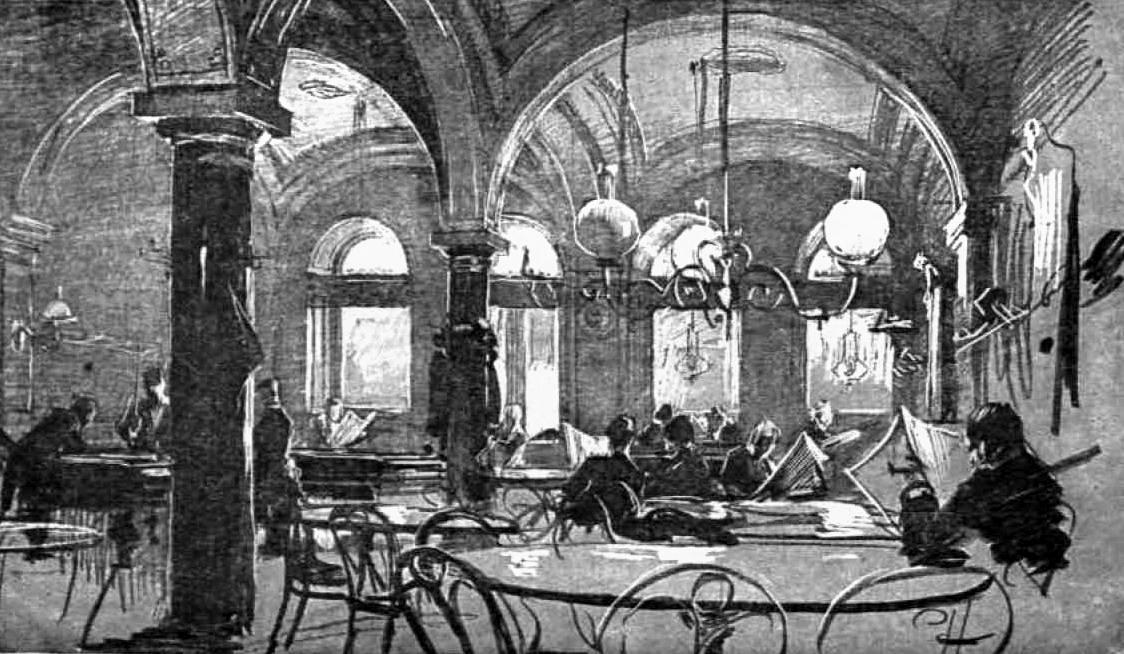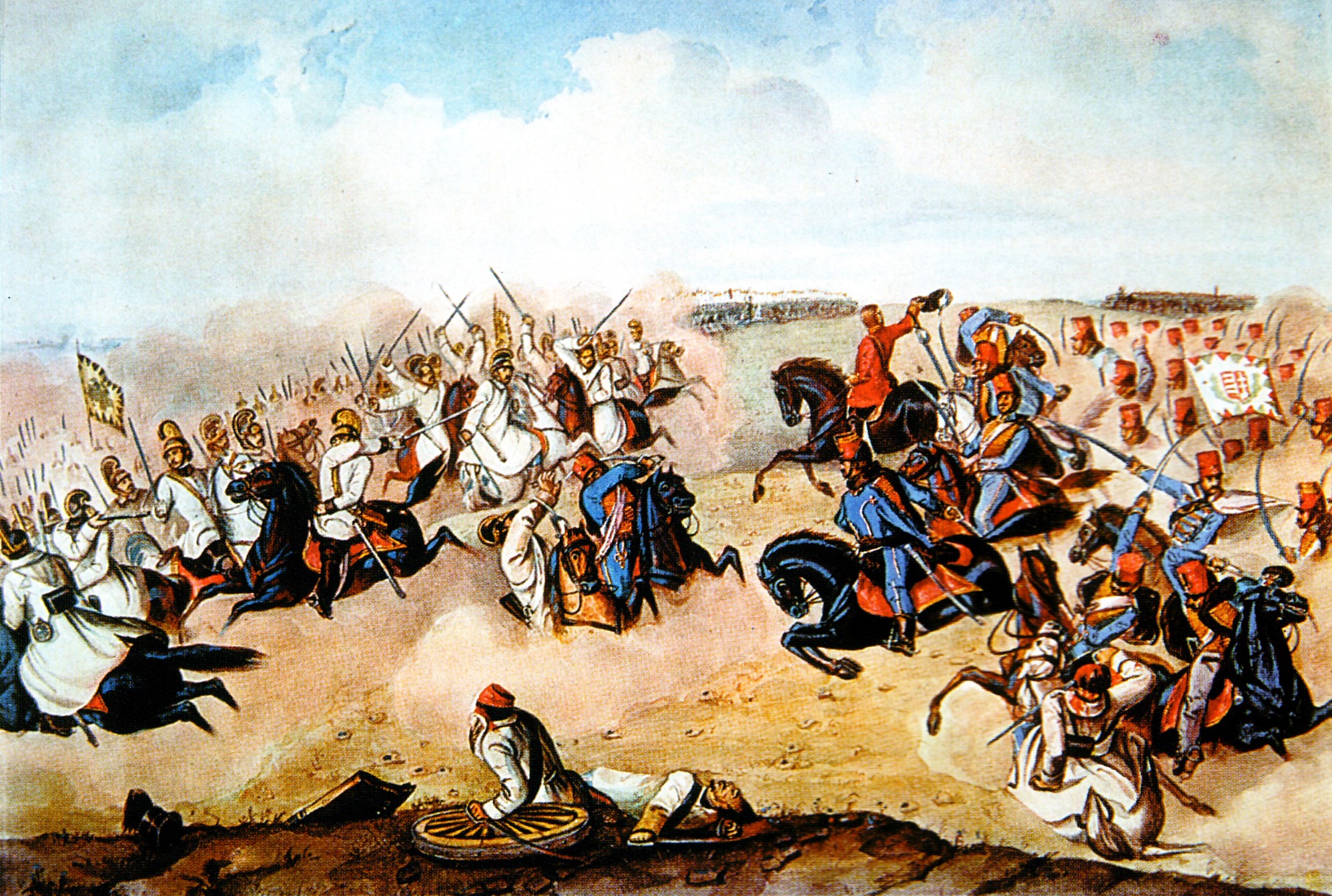
In Hungary, too, coffee houses were the centers of social life. Just think of the Pilvax Café, which was one of the starting points of the 1848 revolution.Continue reading

The Hungarian Civic Revolution and War of Independence of 1848-1849 was among the many wars waged against European monarchies in the name of national independence. Following Rákóczi’s War of Independence at the beginning of the 18th century, this was the second major instance of Hungarians rising up against the Habsburg Empire. The newly formed national army won decisive victories against the Habsburgs, but it was ultimately overpowered when Tsarist Russia entered the picture.
Unlike Rákóczi’s war, where the allegiance of Hungarians was much more geopolitically split, the war fought from 1848-49 was defined by a shared conception of the Hungarian nation state. As such, even though Hungary lost, the conflict proved to be a defining moment in the creation of a modern Hungarian national identity.
To understand the origins of the revolution and war, we must go back to the Budapest of March 15, 1848, and sit down for a coffee with the Company of Ten (Tízek Társasága). Here we would see the youth group of writers made up of legends such as Sándor Petőfi, a poet, Mór Jókai, a writer, Pál Vasvári, a philosopher and historian, and József Irinyi, a journalist. While others were playing pool, socializing, and reading the news, these gentlemen were set on sparking a revolution.
The Company of Ten was not an ordinary youth group. It was strongly influenced by the Hungarian Jacobin movement, which advocated for a federal republic in Hungary and an end to the monarchy. Revolutionary sentiment and the agency of the common people was becoming a strong theme in Europe, with the leading figure in Hungary’s separatist movement being the journalist and politician Lajos Kossuth, who became a member of the Hungarian Diet in 1847.
Kossuth’s rivalry with “the Greatest Hungarian,” Count István Széchenyi, cannot go unmentioned. In opposition to Kossuth’s advocation for separation from the Empire and rapid industrialization, Széchenyi aimed to modernize Hungary with progressive reforms and economic advancement under the Habsburg Monarchy.
The Count had gained significant popularity for his actions, establishing the Hungarian National Academy of Sciences, introducing steam shipping on the Danube, voicing practical solutions to economic problems, building the famous Chain Bridge, along with a multitude of other infrastructural solutions.
But these reforms and their backing for Széchenyi’s belief that liberty would follow economic progress were overshadowed in the 1840s by Kossuth’s more radical following, particularly of youths. Széchenyi condemned Kossuth’s promotion of Magyarization, the forced assimilation of non-Hungarians, which was particularly controversial as it stirred resent among the country’s large Croatian, Serbian, Slovakian, and Romanian minorities.
Kossuth, known for his oratory skills, set the rebellion in motion with a speech on March 3, demanding political co-determination and a constitutional monarchy. With Kossuth’s speech on March 3 and Petőfi’s recital of Nemzeti Dal in Pilvax on March 15, the revolution had begun. Following the revolution in Pest, the first Hungarian responsible government was formed with Lajos Batthyány as prime minister. It should be noted that aside from Kossuth, all members of the government were supporters of Széchenyi’s ideas.
The formation of the new government and the adoption of the Twelve Points of the reformers led to uprisings from ethnic Serbs, Croats led by Colonel Josip Jellacic, and Romanians in June, September, and October respectively. The Hungarian government did not have enough military power to protect itself at first, as most of its army was returning from distant territories of the Austrian Empire. Non-Hungarian Imperial soldiers stationed in Hungary revolted in the fall.
With around 25,000 soldiers (nine hussar regiments, 26 infantry battalions, and two Italian battalions), and 60,000 partially armed national guardsmen, Hungarian forces were able to quell the rebellions of royalist forces and defeated Jellacic at the Battle of Pákozd. The army then advanced into Austria on October 3, but was repelled at the end of the month by Prince Windisch-Grätz’s imperial army at the battle of Schwechat.
At this point, the Hungarian government began building up its own national army, Honvéd. Led by the young colonel Artúr Görgei, the army was significantly strengthened in preparation for the imperial army’s attack. Görgei saved the 28,000-strong Hungarian army from imminent defeat, retreating east when Windisch-Grätz crossed the Lajta river with 55,000 troops in December.
Despite constant chastisement from Kossuth, Görgei continued the retreat of the vastly inferior Hungarian military, during which he lost two of five battles, then secured eastern Hungary in preparation for a counterattack.
It is best to read a book on the Hungarian War of Independence to understand the extent and detail of the following campaigns Görgey led against the Imperial army. As a broad generalization, the counterattack can be summarized as an exceptional military success in the face of an expectedly much stronger military.
It is safe to say that without the aid of Tsarist Russia, Hungarian forces would have defeated the Habsburgs, as a multitude of victories were won against the Imperial army during Honvéd’s counterattack. However, the war took a serious turn after Emperor Franz Joseph called to Tsar Nicholas I of Russia in March 1849 for help. Görgei’s army could not defeat the united armies of the two empires (There were more than four times as many Austro-Russian soldiers at the battle of Győr, for example).
Nevertheless, the Hungarian army fought on against a five-times-larger Russian army, putting up a serious fight under the leadership of General Görgei. Ultimately, however, the war culminated with the the Hungarian army’s surrender to the Russian army at Világos in August of 1849.
Before Görgei left to negotiate the surrender, the Hungarian army shouted to him: Long live Görgei! Bringing him to weep. Despite trying to convince officials at the Russian headquarters that he was the only one who bore responsibility for the army’s actions, and that his officers were simply following orders, the Russian army commander Ivan Paskevich could only guarantee that Görgei’s life would be spared.
When the decision was handed over to Austrian officers, they did not show mercy. Thirteen Hungarian generals, with the exemption of Görgei, were executed in the city of Arad. Despite his actions proving his loyalty to the very end, Görgey was deemed a traitor by the Hungarian people.
There is so much to unpack in the war of 1848/49 that one article is not nearly sufficient to encompass it. There were a multitude of factors contributing to the war, and from a political perspective, it cannot be broken down to a question of the revolutionaries being good and the pro-establishment aristocrats evil. It is best for readers to read up on its key figures and the events of the conflict, as it may seem easy to draw broad generalizations at face value.
In the featured photo, a painting by Mór Than depicting the battle of Komárom, with Artúr Görgei in red. Featured photo via Wikipedia